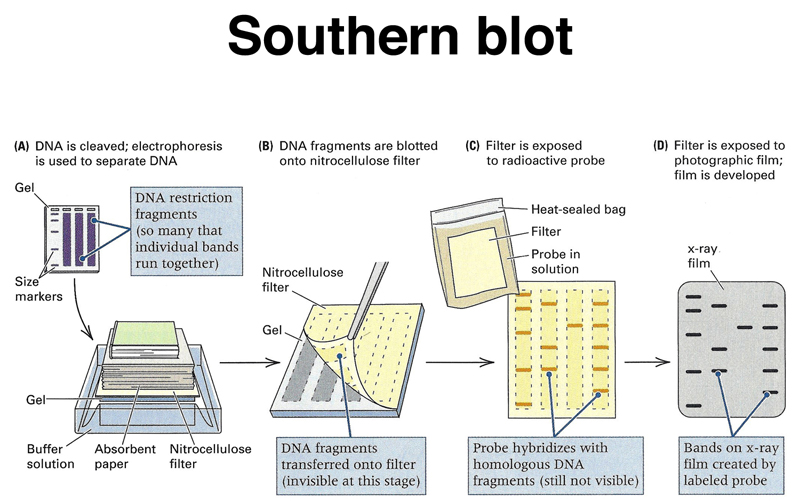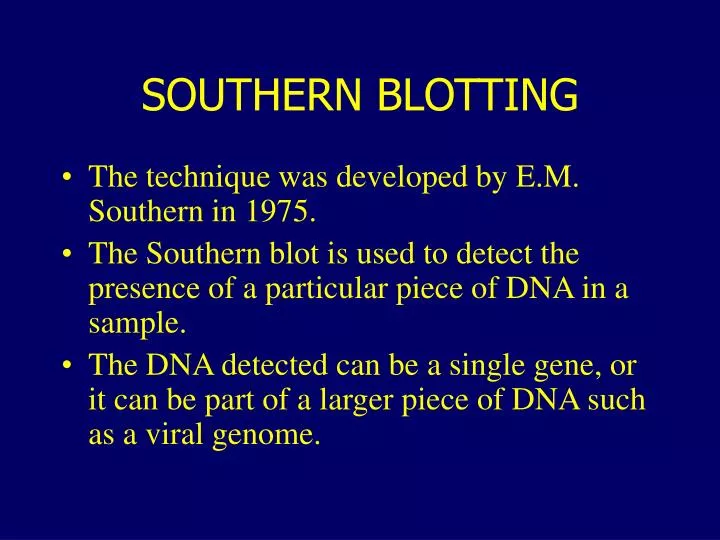

Less desirably, it is obtained indirectly from the amino acid sequence in the target protein. This information may be obtained directly from analysis of the target DNA or RNA.

#SOUTHERN BLOTTING TECHNIQUE SERIES#
Oligonucleotide ProbesĪn oligonucleotide is a short fragment (10-100 nucleotides) of single stranded DNA prepared by a series of chemical reactions producing a known sequence of nucleotides.įor the oligonucleotide to be used as a probe, the specific nucleotide sequence must be known before synthesis begins. To bind mRNA, the antisense (opposite strand to mRNA) riboprobe must be prepared. The labeled RNA probe is single stranded and will combine with either DNA or RNA. RNA probes or “riboprobes” are prepared by transcribing (as compared to PCR – replicating) a double stranded DNA template that has been cloned into a vector.

In synthesis reactions, the label is commonly incorporated during polymerizeation. Special phage techniques can make ssDNA probes, or PCR can be used to amplify a region, and the amplicons used as probes. This is usually done by boiling the probes just before use. dsDNA (double-stranded) probes made in any fashion need to be denatured just before use into single strands. Once the probe is purified, labeling is performed (labeling will be discussed in a section below). Alternately, cloned fragments can be cut out from plasmids and purified from the rest of the plasmid also by gel electrophoresis. Fragments of known size and sequence can be isolated from agarose or acrylamide gels and purified, then labeled for use as a probe. The only requirement is that it is complementary to the target. Probes can be made from any sequence of DNA. *Note: Additional probe information is also provided in Nucleic Acid Sequencing. This topic part has one section: Content Tutorial. This is Part A, Nucleic Acid Labeling, under the module topic, Nucleic Acid Hybridization & Expression Analysis.


 0 kommentar(er)
0 kommentar(er)
